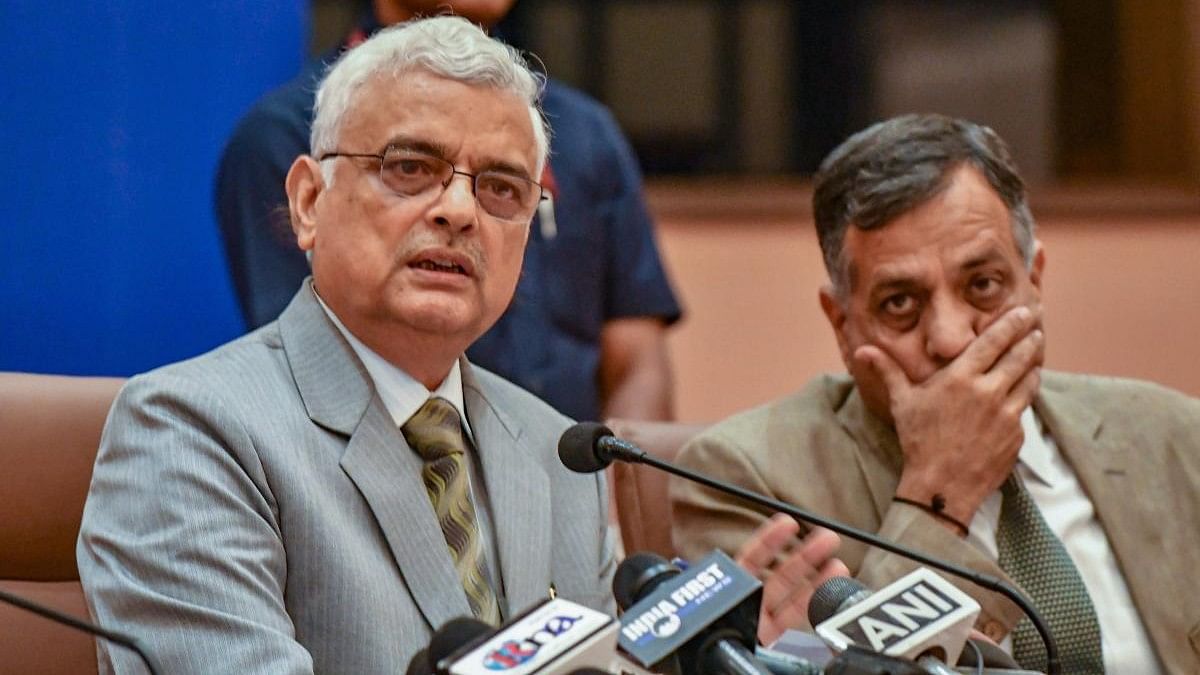
Former chief election commissioner O P Rawat.
Credit: PTI Photo
New Delhi: With the Lok Sabha elections being held amid scorching heat, a former chief election commissioner has said such a situation can be avoided by adjusting state poll timings to allow conducting general elections during the cooler months.
According to former chief election commissioner O P Rawat, there is a six-month window to hold parliamentary elections and a gap of two to three months is generally observed between state and general elections.
The window to hold general elections opened on December 17, 2023. Since state Assembly elections were scheduled in November and December, parliamentary elections were announced in March, he told Climate Trends, a research-based consulting and capacity-building initiative.
Rawat suggested convening an all-party meeting to reach an agreement on conducting state elections after the Lok Sabha polls or amending the law to empower the Election Commission to schedule state elections slightly earlier.
Hundreds of thousands of voters had to cope with the searing heat when they stepped out to exercise their franchise in the first two phases of the Lok Sabha elections on April 19 and April 26. The third phase of polling to elect representatives from 94 constituencies in 12 states will take place on May 7.
Amid the prevailing albeit weakening El Nino conditions, the India Meteorological Department (IMD) had earlier warned of extreme heat during the April-June period, coinciding with the 44-day Lok Sabha elections, the second-longest in history.
Former election commissioner Ashok Lavasa said the Election Commission of India can conduct Lok Sabha elections anytime within the six-month window but has to be extremely careful that the government's term is not curtailed even by a day.
Conducting Lok Sabha elections in February-March is also problematic as it is exam time in schools and colleges, he said.
Following a decrease in turnout in the first phase of voting, the poll panel set up a task force to review the impact of the heatwave five days before polling for the remaining phases.
The task force includes officials of the poll panel, the IMD, the National Disaster Management Authority (NDMA), and the Union Health and Family Welfare Ministry.
Given the central government's contemplation of the "one-nation-one-poll" concept, the IMD chief had earlier told PTI that authorities must consider weather conditions and the climate in their planning.
"One nation, one poll" refers to the idea of holding simultaneous polls in the country to elect Lok Sabha and state assembly representatives.
April witnessed record-smashing maximum temperatures in east, northeast and southern peninsular India, prompting health warnings from government agencies and some states to suspend in-person classes in schools.
A number of stations recorded their highest-ever April day temperatures with the mercury soaring to 47 degrees Celsius at several places.
The weather office had earlier expected four to eight heatwave days in different parts of the country in April against a normal of one to three days. Ten to 20 heatwave days are expected against a normal of four to eight in the entire April-June period.
Data shows that heat waves this April were far worse than in 2023, the warmest year on record so far.
The IMD last week said above-normal maximum temperatures are likely in most parts of the country in May and a significantly higher number of heatwave days is expected over the northern plains, central region and adjoining areas of peninsular India.
Normally, the northern plains, central India and adjoining areas of peninsular India experience around three days of heat waves in May. India witnessed two spells of heat waves in April -- from April 5 to 7 and April 15 to 30.
The IMD attributed the prolonged heatwave spell over east, northeast and southern peninsular India in April to the absence of thunderstorms and an anti-cyclone at lower levels over the west-central Bay of Bengal and the adjoining eastern coasts of India.
This caused the sea breeze to get cut off over Odisha and West Bengal on most days.
The weather office said southern peninsular India recorded an average maximum temperature of 31 degrees Celsius in April, the second-highest since 1901. The mean temperature (28.12 degrees Celsius) in April in east and northeast India was the highest since 1901, it said.
The IMD said above-normal maximum temperatures have become frequent over southern peninsular India since the 1980s. The region recorded 12.6 mm rainfall in April -- the fifth lowest since 1901 and the second-lowest since 2001.
According to IMD data, the number of heatwave days this April was the highest in 15 years in Gangetic West Bengal and nine years in Odisha.
Odisha also experienced the longest heatwave spell (16 days) in April since 2016.